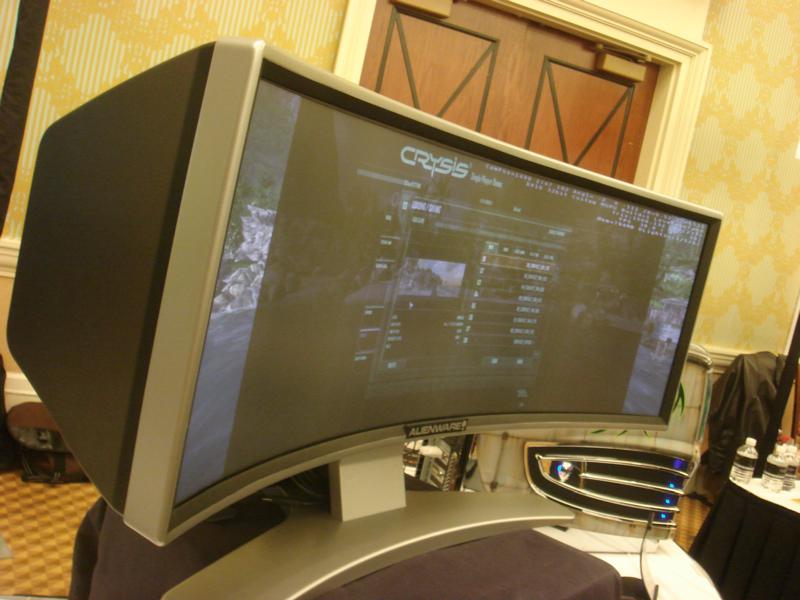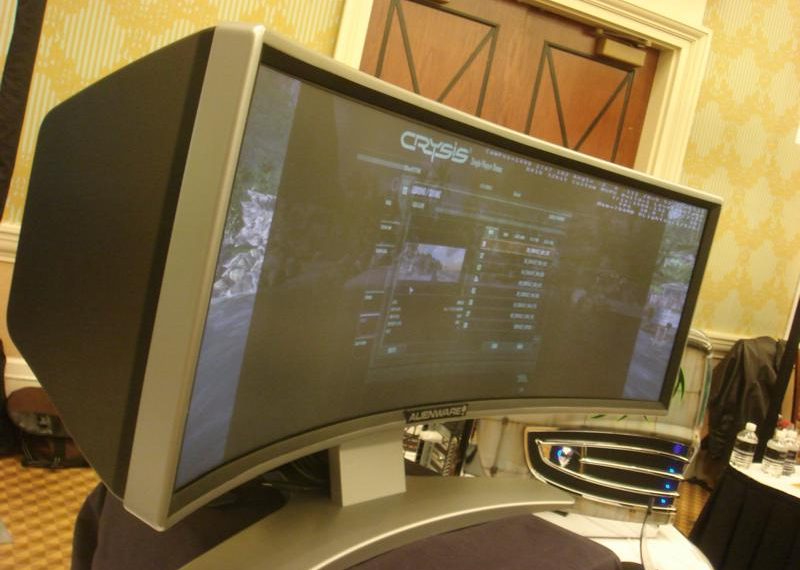In 2008, Alienware stunned the gaming world with the unveiling of its Curved Seamless Display (CSD) at CES. This futuristic monitor was designed to provide an immersive gaming experience unlike anything seen before. With a 2,880×900 resolution and a 32:10 aspect ratio, the massive curved screen aimed to envelop the user’s field of view, creating a more natural and engaging visual experience. It would be the first of it’s kind to bring about a new generation of “Ultra Wide” monitors that would come in later years.

A Technological Marvel
The CSD utilized a rear-projection DLP system, boasting an incredibly fast 0.02ms response time—a speed Alienware claimed was an order of magnitude better than competing displays at the time. This ultra-fast refresh rate significantly reduced motion blur, making it ideal for fast-paced gaming, particularly in titles like Crysis, which Alienware showcased at the event.
Despite its impressive size, the monitor required only one DVI input for signal transmission. Interestingly, the display was actually composed of two high-quality WSXGA screens seamlessly joined together, allowing for a dual-monitor configuration if users wanted an even wider setup.

The Future That Never Came
Alienware planned to release the CSD in the second half of 2008, but the company remained tight-lipped about pricing details. Unfortunately, despite the excitement surrounding the monitor, it never made it to mass production. The technology, while groundbreaking, faced challenges such as visible seams where the screens joined together—an issue Alienware promised to resolve before launch.
Though the CSD never became a consumer product, its ambitious design and immersive concept paved the way for modern ultrawide and curved gaming monitors. Today, curved displays are a staple in gaming setups, proving that Alienware’s vision was ahead of its time.

























